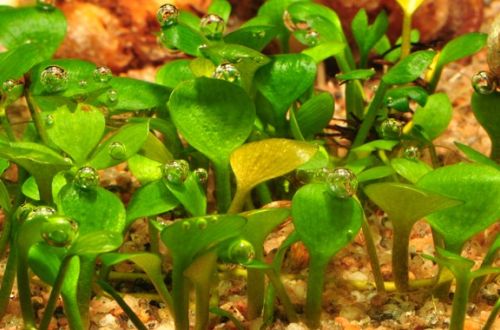
Helanthium angustifolia
Helanthium narrow-leaved, scientific name Helanthium bolivianum “Angustifolius”. According to modern classification, this plant no longer belongs to Echinodorus, but is separated into a separate genus Helanthium. However, the former name, including the Latin Echinodorus angustifolia, is still found in descriptions in various sources, so it can be considered a synonym.
The plant is native to South America from the Amazon River basin. It grows both underwater and above water, which significantly affects the shape and size of leaf blades. Under water, narrow long streams of light green color with veins about 3–4 mm wide and up to 50 cm long and more are formed. The length depends on the level of illumination, the brighter – the shorter. In intense light, it begins to resemble Vallisneria dwarf. Accordingly, by adjusting the illumination, it is possible to achieve varying degrees of growth. Echinodorus angustifolia is not picky about growing conditions. However, do not plant in nutrient-poor soil. For example, iron deficiency will certainly lead to color fading.
On land, in a humid paludarium, the plant is much shorter. The leaflets acquire a lanceolate or oblong shape, 6 to 15 cm long and 6 to 10 mm wide. With daylight hours less than 12 hours, small white inflorescences appear.





